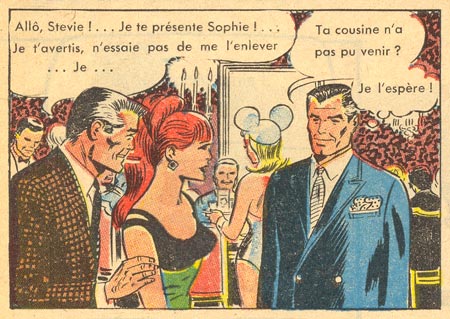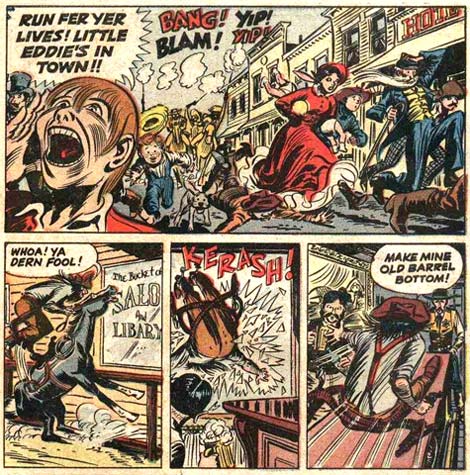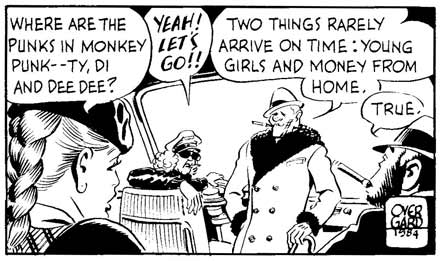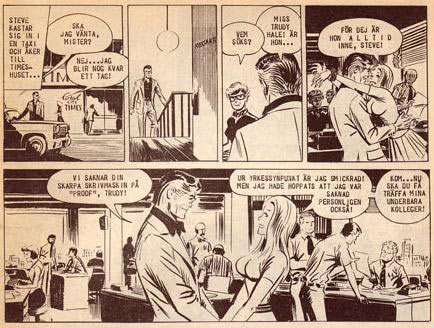'Steve Roper' (Dernière Heure/Le Petit Journal, Quebec, 16 July 1966).
William Thomas Overgard found his way to comics through the work of Milton Caniff. Overgard and Caniff started a longtime professional relationship, when Overgard wrote Caniff a fan letter at age twelve. Overgard joined the Navy for two years, but kept sending his artwork to Caniff, who gave him tips and encouragement. After the World War II, Caniff introduced him to the field, and Overgard started out working for Lev Gleason publishers under Charles Biro.
'Daredevil' (February, 1953).
At Lev Gleason Publishers, Overgard cooperated on titles such as 'Daredevil', 'Boy' and the 'Black Diamond' western series. He continued his activities at Western Publishing with 'Jungle Jim' and 'Ben Bowie', among others. In the early 1950s, Overgard ghosted Caniff's 'Steve Canyon' strip for a while.
'The Crisco Keed' (The Three Stooges, issue #7, Oct. 1954).
Afterwards, Overgard contributed many comics to syndicates like United Features. In 1952 he was contacted by Publishers Newspaper Syndicate to take over the 'Steve Roper' series. Overgard accepted and he drew the series until 1982, giving it new popularity. His assistant on the series was Al Wenzel.
'Rudy' (1984).
After his run on 'Steve Roper', Overgard took on 'Rudy' (1984), a gag series about a talking gorilla, which lasted for only a year. In 1971, he had already succeeded Allen Saunders as the writer of 'Kerry Drake' (art by Alfred Andriola). William Overgard was additionally the author of novels like 'Pieces of a Hero' and 'Moonlight Surveillance'.
An image from a 1961 'Steve Roper' story was used by pop art painter Roy Lichtenstein for his 1961 painting 'I Can See The Whole Room ... And There's Nobody In It!)'.
'Steve Roper'. Swedish-language version.






